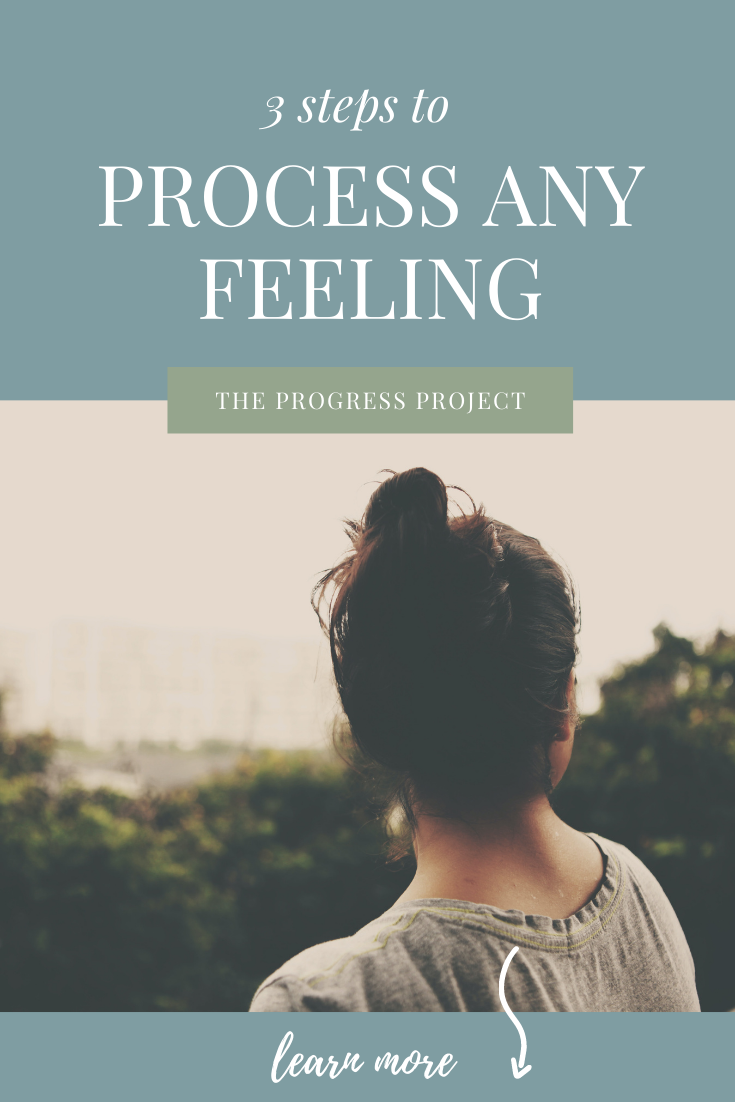How To Feel Your Feelings
How To Feel Your Feelings
Today I want to talk about how to actually feel your feelings and emotions.
I’ve noticed for myself and in conversations with others how hard it is for many of us to do this “simple” thing of fully feeling your feelings and processing those emotions through.
The more I learn about emotions and the mind/body connection, the more I believe that part of taking care of ourselves and our health involves a healthy processing of emotion.
And that if we don’t process our emotions and instead we shove them back inside or distract ourselves from them, it can have not just emotional consequences like anxiety or depression or anger outbursts but physical consequences as well.
So let’s go over the difference between a thought and feeling/emotion and 3 easy steps to fully process your emotions so you can start taking better care of your emotional and physical health.
What’s the difference between a thought and a feeling?
Sometimes we get thoughts and feelings mixed up. So just to clarify, A feeling or emotion is a physical sensation in your body.
A feeling is NOT a thought or an action. The emotion is the vibration in your body. Feelings come from our thoughts, subconscious or not. Thoughts are the words we tell ourselves.
Easy way to remember:
Thoughts = language
Feelings = sensations
3 Steps To Process A Feeling
Now that we know the difference between a thought a feeling. We can do the work of processing any feelings that come up for us. Here are the 3 steps to process a feeling:
Notice it
Name it
Tend to it
This is such a great way to fully process a feeling so you can give it the time and attention it needs and not have to worry about it lingering once you’ve let it go. Let’s go over each one in detail so you can go through the steps on your own and fully process your feelings!
Step #1: Notice it
It’s incredibly important to become aware of the feeling or emotion your experiencing. Notice the uncomfortable physical sensation in your body. Be able to describe it.
What does it feel like?
Sharp pain in my chest
Hot and flushed in neck and face
Pit in stomach
Shaky arms
Pressure in head
Step #2: Name it
Call it what it is. Disappointment, guilt, sadness, anger, embarrassment, worry, pressure, fear, irritation, anxiety. What would you call the feeling or emotion you’re experiencing?
Then repeat it to yourself “This is me feeling hurt.” or “Worry feels like this.”
Even if you aren’t sure what it is, test it out by guessing. If sitting with that one doesn’t feel right, name it something else and see how that feels.
Step #3: Tend to it
What might it need? Often just attention and acknowledgement will do the trick. Sit with it for a few minutes. Shine a light on it. See it.
Imagine that your in a dark room with a flashlight and that your feeling is a little creature hiding in the dark. As soon as you shine a light on your feeling, you’re able to see it fully. By facing it squarely for a few moments, we start to believe that the emotion can’t hurt us after all. There’s not so much to be afraid of.
An emotion isn’t there to hurt you, it just wants your attention. Once you see it properly, it dissipates (much more quickly than you expect).
A few things to remember: Tending to your emotion or feeling isn’t the same as wallowing in it.
Watch for what your instinct is. Do you try to:
Dodge it?
Hide from it?
Distract from it?
Dwell in it?
There’s really no ACTION to take here.
If you know something like running or exercising or journaling helps you process emotions that is great. But it’s not necessary. Just sitting with it is enough.
I’ve found I can create the physical sensation once I’m familiar with it. If I’m feeling hurt, I feel an actual pain in my chest. And if I’m ruminating on something that made me feel hurt, that physical sensation will arise again. Noticing that gives me a little control over it.
-Kristin
Want to listen in on our conversation?
Click below or on apple podcasts & choose episode 138 to listen to the full podcast episode.
You can also search The Progress Project on any podcast app including Spotify!
Podcast Ep. 138 How to Feel Your Feelings
Today we're talking about what it means to actually process your emotions -- and how to do it. If we don't take time for this, our unprocessed feelings can build up and create not just emotional consequences but physical consequences too.
Listen in to learn:
The difference between a thought and a feeling
3 steps to process a feeling
How to figure out what emotion you're feeling and name it
What to actually do with the emotion
Why it's useful to notice your habitual emotions
Links Mentioned
If you’re new, here’s our Email Newsletter sign up where you can get fun journaling prompts, extra ideas from our episodes and inspiring examples to help you live with more purpose, creativity, and joy!
Get Our Premium Content: Ready to take better care of your personal and creative growth? Join our Patreon now and get mini podcast episodes, guided meditations & simple challenges each month that help you nurture your creative self so you can start feeling like your best self! Our premium content is simple & organized so you can easily learn as you go about your day!









